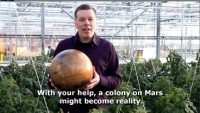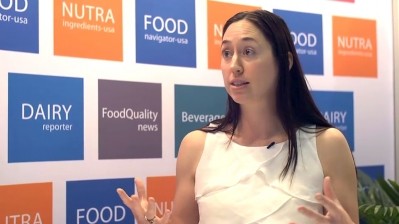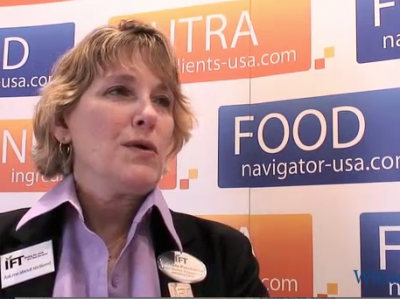How can food grown on Mars boost food security on Earth?
!['People will also have to eat [on Mars and the moon], and what is more logical than to grow your own food locally?' asks the researchers' crowdfunding page. © iStock / Aphelleon](/var/wrbm_gb_food_pharma/storage/images/_aliases/wrbm_large/1/9/7/6/1386791-1-eng-GB/How-can-food-grown-on-Mars-boost-food-security-on-Earth.jpg)
The researchers, led by senior ecologist Wieger Wamelink, grew fruit, vegetables and grain on soil that simulates the nutrient profile of soil from Mars and the moon. This soil, provided by NASA, contains traces of heavy metals, such as lead, cadmium and arsenic that are toxic to humans but do not affect the plants ability to grow.
The team of researchers from Wageningen University want to analyse the plants to see if they have absorbed these heavy metals and whether they would be dangerous for humans to eat.
They have launched a
crowdsourcing appeal to raise funding for their project. “Several groups including NASA, Elon Musk and Mars-One hope to take people to Mars in the next ten to fifteen years. Returning to the Moon may happen in the next five years. If we get there it will be to stay for extended periods. People will also have to eat there and what is more logical than to grow your own food locally?” asks the crowdfunding page.
Wamelink told FoodNavigator he expected the plants to be safe for human consumption. "We already did some tests on solvability of soil components, and also for the plant nutrient availability, and there were no metals in the solution - at least not above the detection level - except for aluminium in the moon soil simulant, where it was just above the detection level."
A second project will analyse the nutrition content of the plants through plant solvable content applying a mass-spectrometer, said Wamelink.
Back on Earth
But by providing an insight into how plants absorb heavy metals from the soil, the experiment could also throw up interesting findings that can be used closer to home, such as developing closed cultivation systems or in arid desert-like conditions on Earth.
“[The findings] can contribute to growing crops, for example in containers, in places where it is currently not possible or in places where there has been a disaster and food is urgently required to be grown,” say the researchers.
It could also shed light on using plants to clean soils that are contaminated with heavy metals.
In 2013 the researchers grew 12 different plant species – both wild plants such as shamrock as well as agricultural crops including rye and tomato – in simulated Martian and lunar soil.
A total of 840 pots were filled with five seeds per pot and while the plants in the Martian soil grew well, many of the plants in the moon soil died soon after germination due principally to a lack of moisture and aluminium toxicity.
Once they switched the small pots for larger containers and added organic manure, the plants thrived in both soils and the scientists were able to harvest rocket, cress, radish, peas, rye and tomato.
If the target of €25,000 is not met the researchers will either reduce the scale of the project or look for alternate sources of funding.
Funders will be invited to visit the experiment, and results would be communicated through a newsletter and blog, Mars One, the project’s Facebook page and crowdfunding platform.
Source: PLOS One
“Can plants grow on Mars and the moon: A growth experiment on mars and moon soil simulants”
Published: August 27, 2014, DOI: 10.1371/journal.pone.0103138
Authors: G. W. Wieger Wamelink , Joep Y. Frissel, Wilfred H. J. Krijnen, M. Rinie Verwoert and Paul W. Goedhart

















